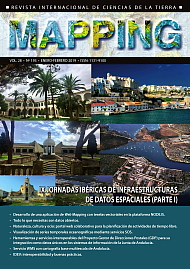Visualization of oceanographic time series through SOS services
Palabras clave:
SOS, OGC, SWE, SensorML, O&M, series temporalesResumen
The duration of scientific projects (average of 3 years) is a limitation
to obtain the long time series that are essential to achieve a good
knowledge of oceanographic processes. Permanent marine stations,
such as the Coastal Ocean Observatory (COO) of the ICM-CSIC, enable
to record measurements of oceanographic parameters in the
long term. Since April 2002, a monthly oceanographic cruise has
been collecting temperature, salinity, turbidity, fluorescence, and
pressure measurements at nine points along two perpendicular
profiles in front of Barcelona city. The specifications defined by the
Sensor Web Enablement (SWE) technology of the Open Geospatial
Consortium (OGC) allow the standardization of the data acquired
by the sensors. Specifically, Sensor Observation Service (SOS) establishes
the description of the observations and the sensors. Two
technologies have been evaluated allowing the implementation
of a SOS system concluding that it is necessary to improve them to
be more user-friendly. The standardization of the data facilitates its
visualization with very useful tools for a first analysis and oceanographic
interpretation. This standardization supposes a great effort that
is compensated by the interoperability that is achieved.





